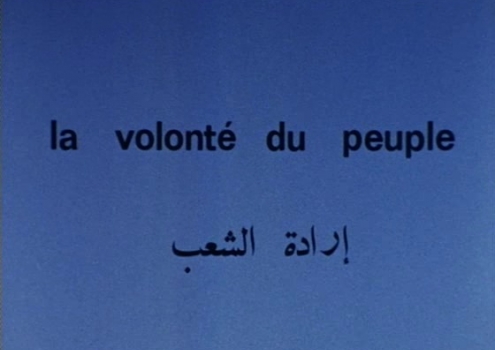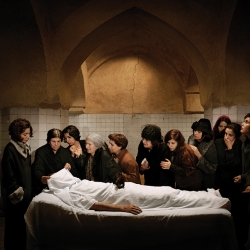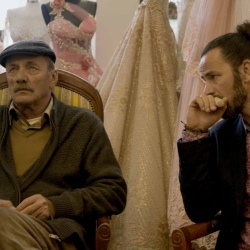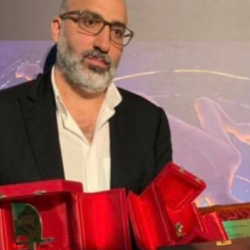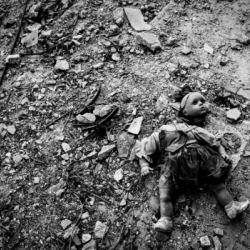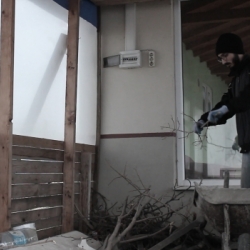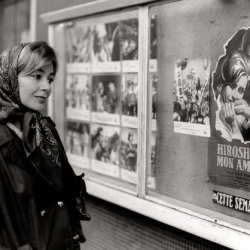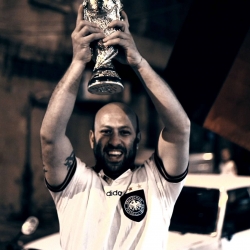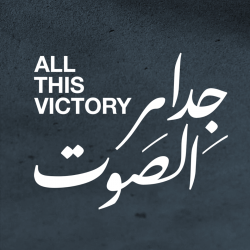Here and Elsewhere, Between Yesterday and Today
23/03/2018
Author: Samir Skayni
“In 1970, this film was called Victory.
In 1974, this film is called Here and Elsewhere.”
With these words, in his own voice, Jean-Luc Godard opens his quasi-documentary Here and Elsewhere, emphasizing the conjunction “and” which separates the two places. He does this in pronunciation, repetition and simply by showing the letter on the screen in 3D and fixing it for a few seconds. Of course, this emphasis is not an absurd move by Godard, but rather it is the essence of the whole film, showing the contradiction between two worlds, or even the duality of a single world: between here and elsewhere.
Godard finished this film in 1974, after having travelled in 1970 to Jordan and staying for several months with French filmmakers. Godard tackles the image of the Palestinian revolution from the Western perspective.
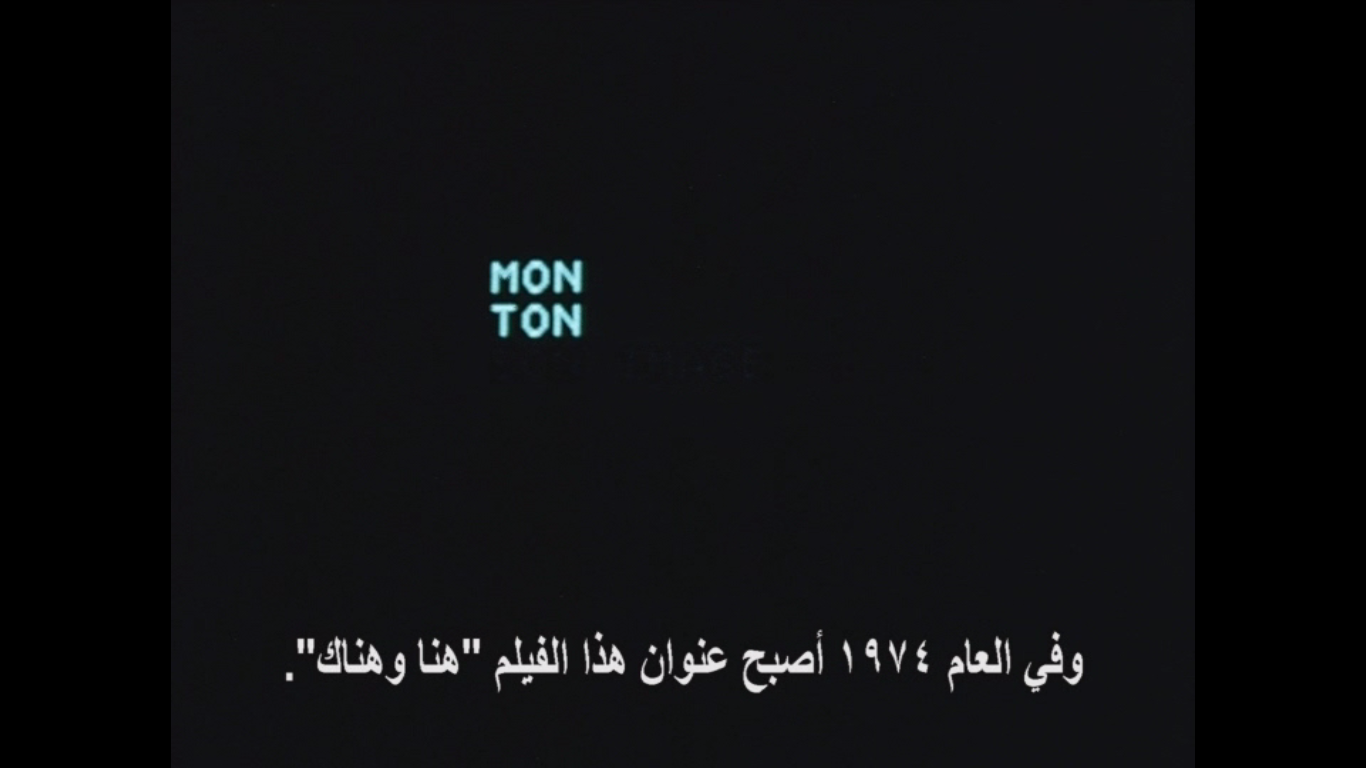
During the first viewing, the film appears to be confined to the Palestinian revolution. It shows the contrast between the suffering of the Palestinian people and the affluence of the European people, unaware of what is happening in the Arab world, content to learn a little about it from their seats in front of the TV screen.
In part, the film shows how scenes are manipulated, reality is distorted, and methods of filming and editing are used before the final material is shown on TV, broadcast to societies that are far from the center of the action, both geographically and subjectively. To be sure, this discrepancy is clear in the film and this is delivered into the audience’s consciousness. It is made ever more clear through constant movement between scenes of a French girl in the sitting room in front of the TV and a Palestinian girl of the same age undergoing military training in the camp.
Precisely herein lies the genius of Godard. He delivers a clear and profound message which is absorbed by the viewer without drawing direct attention, which is to say that the filmmaker is able to address the unconscious of the viewer. He does this through scenes that come by the screen in passing, without being dealt given much attention. These are precisely the scenes that will remain stuck in the viewer’s memory after the broad headlines of the film have been forgotten.
Is not this our reality today outside of the film?
Maybe I won’t mention which war I’m talking about right now, but I see it clearly in front of me: the child I glimpsed only a few seconds in a video on Facebook, amid the rubble and roar of planes, carrying a torn doll with his right hand and his mother’s severed hand in his left, standing among the cast, awaiting for the orders of the venerated filmmaker.
Life is like a movie, then. Although Godard is the maker of the film, certainly he is not the maker of the events or of the dreaded scenario he documented.
To go back to Godard’s “here and elsewhere,” dissecting the film clip by clip suffices to clarify the meanings of some ambivalent scenes. In this way we can analyze and arrange the scenes according to the context in which they were presented, groping for the “hidden stitch.” This can happen by first linking these pieces together with both their historical and political contexts, and with the objective conditions from which they resulted. Second, we can connect them all together and create a series of scenes in logical, chronological order. This would look more like a short documentary of the relevant various revolutionary events, beginning with the French Revolution of 1789 (Godard hints at this revolution in a very smooth way, typing the number 1789 on a calculator and combining it with several other revolutionary dates) and continuing until the Palestinian revolution of 1970, i.e., the date of filming. All of this would be added to whatever can contribute in the context of this article, that is, the era we are in now, after the production of the film, where we can connect its events to the current reality.
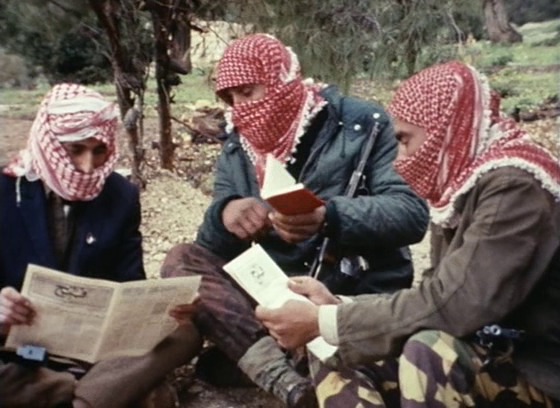
The sequence and presentation of the events is divided into five chapters, each beginning with a fixed frame which presents the title of the chapter, and followed by live action from the Baqa’a refugee camp in Jordan. These scenes document the details of the Palestinian revolution and the camp’s everyday life. Their titles and content are as follows:
The People’s Will: nothing, not even an occupation, a war, or oppression, be it in the form of words or actions, can ignite a popular revolution without the will of the people themselves and their conviction that their cause is righteous. This will was at its height during filming in 1970. This slogan, "The People Wills," also became our headline in the recent past, from 2010 until today. In this case, then, a revolution is possible; nay, it is necessary.
The Armed Struggle: the path towards national liberation, the elimination of the yoke of the ruling regimes, and standing up to their oppression.
The Political Work: a revolution is more than simply baring arms. The politicization of conflict is a necessary factor in ensuring the success of the popular revolution. Introducing this factor into economic, ideological, and social struggles is even more than necessary.
The Prolonged War. The revolution is not a dinner party and it does not end in a single lunar cycle. It is a long-term and cumulative process that moves the society step-by-step towards a new, more progressive system, that is, until the popular revolution achieves fruition – the final stage.
Victory: the final stage. Starting with nothing more than the people’s will, continuing with armed struggle and political work, followed by a prolonged war which is governed by the people’s awareness and an ongoing sense of purpose, up until victory.
This categorization is like a theory of revolution that is compatible with any popular revolutionary practice. Although it was presented in the film in its Palestinian context, the universality of this theory becomes clear precisely in those scenes that address the unconscious. Thus, the film transcends the space of Palestine as images and figures of various world revolutions pass over the screen sequentially. Similarities are highlighted in such a way that the scenes eventually mix up and the specific stage to which any of the images belong becomes blurred. We can be sure, however, that the scenes refer to some popular revolution.
Sooner or later, after a certain amount of oppression and tyranny, the various bodies of people will fight their revolutions and their essences will be similar to one another, even if they possess different forms. From the revolution of 1789, to the National Front in 1932, followed by May 1968, and the factory strike of 1972 (all of which took place in France), in addition to scenes from Vietnam 1955-1975, and Prague in 1968, as well as from the people’s struggle against fascism in Italy… each event, each stop along the way, is represented by short black and white clips that are presented sequentially by the director.
Here are young men attacking a tank in Prague with a tree trunk. There is a picture of the indigenous inhabitants of Palestine. Next we see a picture of two women working in French factories, and finally the most famous of Eddie Adams’ photographs, those showing a man in Vietnam pointing a gun at another man’s head only a few seconds before shooting. The director does not, moreover, neglect the audio component, accompanying each scene with music or a song that fits into the background.
As such, Godard does not settle to stop at any single historical station, but links them all together as one process. Had he been able to visit the Arab region today, he would have added a huge number of stops to his films, events which took place between 1970 and today, and which are even happening at this moment, as this article is being written. Hundreds of scenes documenting popular revolutions against regimes of oppression and occupation.
Moreover, the film is not limited to popular revolutions and depictions of the suffering people. It is also keen to show the face of the tormentor and create a link between all of these extremist, dictatorial “leaders.” They are presented in a single series, starting with Golda Meir and Moshe Dayan, who represent the Israeli occupation and are construed as similar to Hitler, insofar as he was responsible for the Holocaust. (Significantly, Godard draws an analogy between the Holocaust and what the Zionists do to the Palestinian people, including pictures from the Auschwitz and Treblinka camps). The images conclude with Richard Nixon and Henry Kissinger, included because of their involvement in the war against Vietnam. Here it is pertinent to repeat a previous comment: if Godard was to complete his film today, how long would this series have been? How many faces would he have added? Surely he would need a second part!
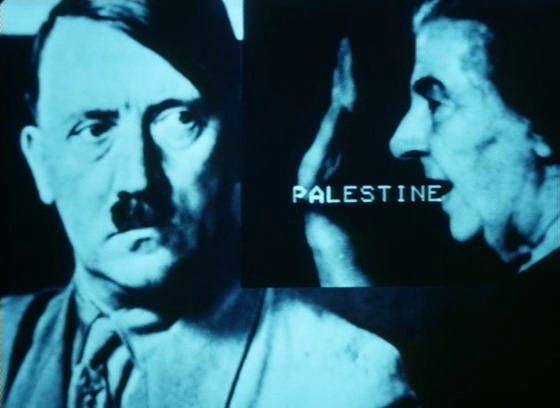
Despite belonging to the cinematic “new wave,” a genre known for its splendor, Godard was able to evoke cutting and realistic images of death. They appear suddenly on the screen without warning. Dead corpses, mutilated faces, burned bodies. Mostly from Black September, some from Vietnam, and others from the remnants of Nazism. Godard notes that all the actors in this film are now dead. These scenes must have been shocking at the time.
But, these days such scenes are constantly being shown without any surprise or shock. Far worse, some from Gaza, others from Yemen or Syria, are being shown on social media websites. These images are very similar to what Godard included in his film. In this way, images of the dead have become a daily staple, to such an extent that some people are now streaming massacres live!
Well then, appeal to Godard - appeal to Godard. You might find a lot of the required materials for the upcoming part of the film.
The required materials? Yes exactly. Death has become content to fill the screens and news bulletins. Bodies are filmed and transmitted online until our turn comes and we become yet another chapter in this long film that glorifies the tormentor, suppressing the victim more and more – unlike Godard’s films.

This leads to the last point in our reading of Godard’s film, which relates to mass murder. Picasso’s Guernica, appears shyly in the background of a single scene from the film. In its historical context this mural represents the city of Guernica in Spain, directly after it was subjected to fierce air raids. This is despite the fact that it was empty of any militants or military targets, thus it was innocent civilians who died. Those who survived the initial bombing later died in fires as the wooden houses burned. In the context of the film, this painting symbolizes the Israeli bombing of Palestinian territories, which resulted in the deaths of many Palestinians in their homes. Today, the image is omnipresent in all that is happening around us, as we exist in the midst of indiscriminate bombardment and the targeting of cities with civilians and military forces alike, from Gaza, to Yemen, to Syria and the list goes on.
“In 1970, this film was called Victory.
In 1974, this film is called Here and Elsewhere.
Here: a French family watching television.
Elsewhere: images of the Palestinian revolution.”
Elsewhere: international communities and peacebuilding organizations watching us on TV.
Here: a warplane raiding a residential neighborhood, the building falls on its dwellers, a child emerges from the rubble with a torn doll in his right hand and his mother’s chopped off hand in his left.
Here, elsewhere. Here and Elsewhere, between yesterday and today.



